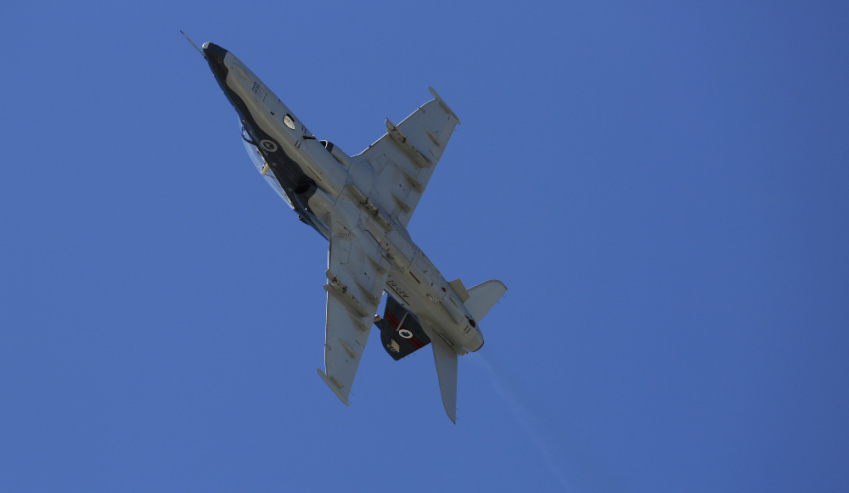Structural testing carried out by BAE Systems Australia and Defence Science and Technology (DST) on the Royal Australian Air Force’s lead-in fighter trainer, the BAE Hawk, revealing the platform has completed the equivalent of 50,000 ‘flying’ hours as part of a major structural testing program in a joint project involving BAE Systems and DST Group.
To continue reading the rest of this article, please log in.
Create free account to get unlimited news articles and more!
The world-first test program was conducted at DST Group’s Fishermans Bend facility in Victoria where for 14 years a Hawk air frame was subjected to the range of loads that it would experience in actual flight, simulating real life fleet usage based on projected operational requirements.
The 33 Hawk aircraft operated by the Royal Australian Air Force have a clearance of 10,000 flying hours – 50,000 flying hours of structural testing is five times the current clearance of the most modern Hawks in air forces across the world and more than 10 times the current flying hours on most of the Australian fleet.
BAE Systems Australia director aircraft sustainment and training Andrew Chapman said, "The Full Scale Fatigue Test is a hugely important achievement for the Australian Lead-In Fighter program and was made possible by the collaboration of a small, dedicated team across many thousands of kilometres."
Based on current usage, the fatigue life remaining in the Hawk airframe would allow the aircraft to continue operations well into the late 2040s.
The Hawk Lead-in Fighter (LIF) Full Scale Fatigue Test formed part of the original Australian Acquisition Contract for 33 Mk127 Aircraft and associated support in the late 1990s that saw the Mk127 enter into service in 2001.
The intention, as part of the Defence Standards, was to demonstrate the structural integrity of the airframe to five times its intended life. The Full-Scale Fatigue Test program began in February 2006 with the intention of demonstrating the structural integrity of a Hawk airframe to five times its intended life. The testing was completed on 5 June 2020.
A defence spokesperson said, "Defence is examining the range of requirements for future lead-in fighter training out to, nominally, 2050 under Project AIR 6002 Phase 1. The successful completion of the DST/BAe Systems full scale fatigue test provides assurance on the Hawk 127 airframe fatigue over that period."
It involved a team of BAE Systems engineers in Brough, UK, working alongside the DSTG team in Melbourne and the BAE Systems Australia LIF team to ensure the successful completion of the program.
The BAE Systems Hawk jet trainer celebrates two decades of service to the RAAF in 2021. Using advanced airborne simulation technology, the Hawk is a flying classroom that can prepare student pilots to take the controls of a combat aircraft, including the F-35 Joint Strike Fighter.
The fleet of 33 aircraft have to date achieved around 122,000 hours of pilot training at RAAF Pearce in WA and RAAF Williamtown in NSW, where the aircraft are based. The Hawk fleet is supported by a supply chain of more than 180 Australian businesses, with a combined workforce of more than 1,000 people.
Stephen Kuper
Steve has an extensive career across government, defence industry and advocacy, having previously worked for cabinet ministers at both Federal and State levels.

 Login
Login








